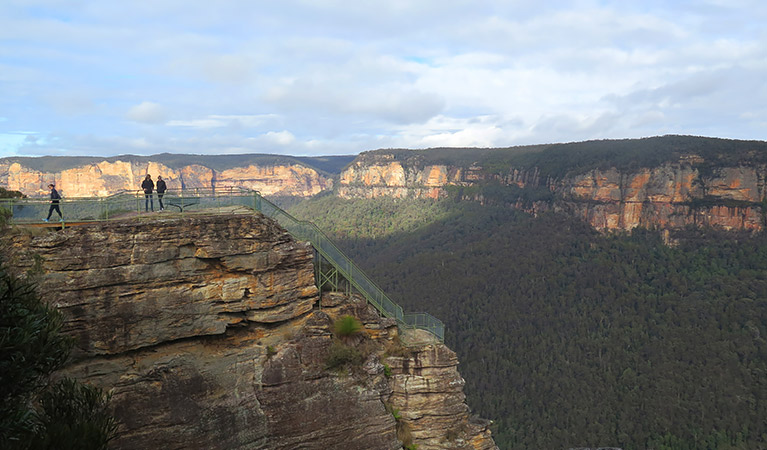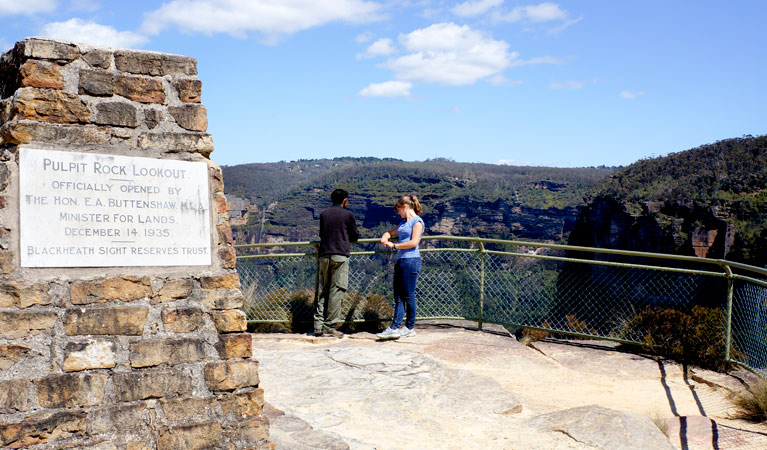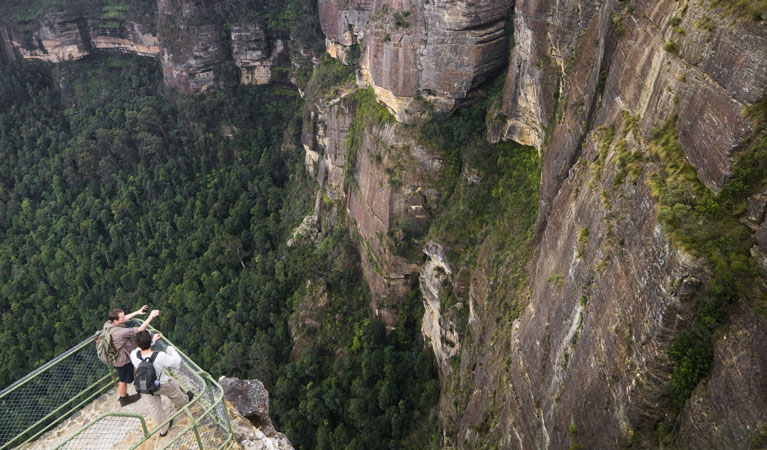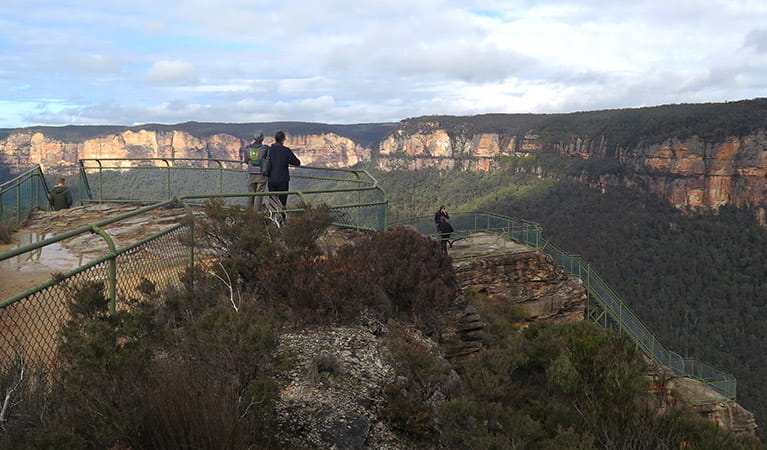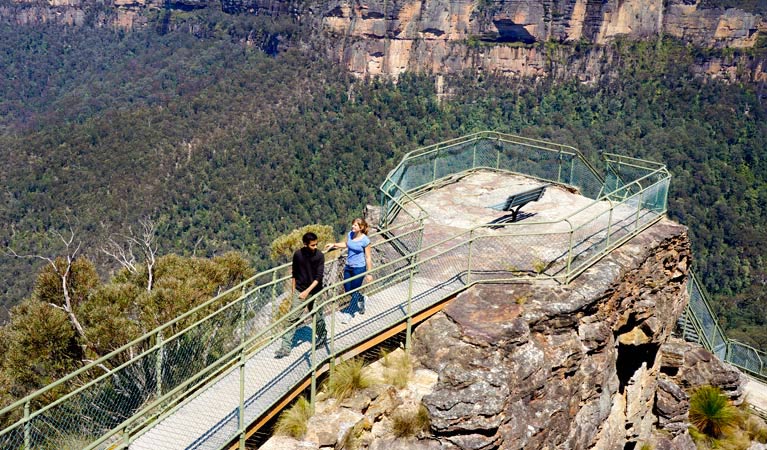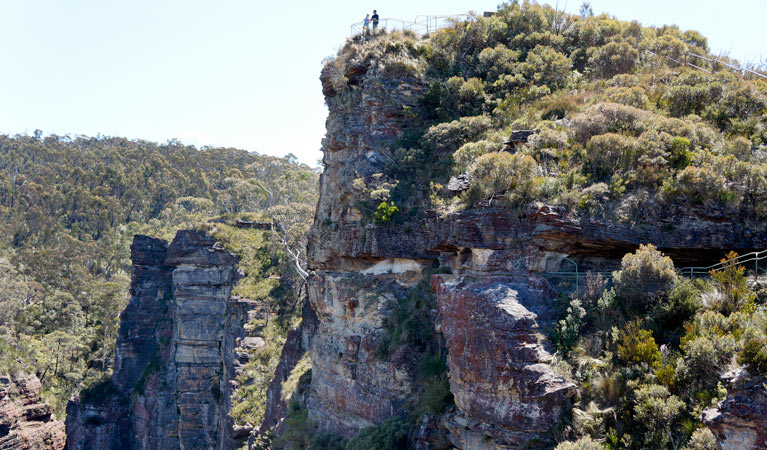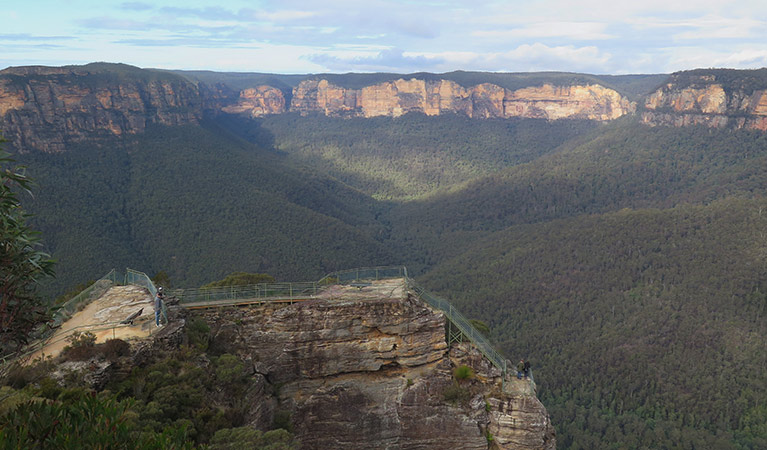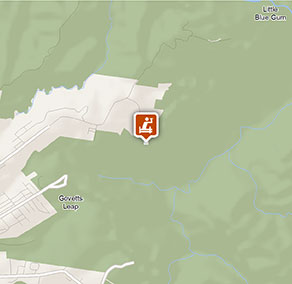Pulpit Rock lookout
Blackheath area in Blue Mountains National Park
Overview
Pulpit Rock lookout offers mountain biking, picnicking and scenic views across Grose Valley, taking in Blue Gum Forest and Govetts Leap in Blue Mountains National Park.
- Type
- Lookouts
- What to
bring - Drinking water, hat, sunscreen, binoculars
- Please note
- There are several sections of narrow, steep stairs, which can be slippery in wet weather.
- Check the weather before you set out. Conditions can be unpredictable, and the unsealed road to the lookout can become boggy after rain.
If you’ve got a head for heights, you'll get a thrill at Pulpit Rock lookout near Blackheath, in Blue Mountains National Park. This multi-tiered lookout juts out on a dramatic blade of rock perched high above the magnificent Grose Valley.
Unpack the picnic basket and enjoy a remote lunch on this isolated pinnacle, far from the popular tourist spots. There are several lookouts that offer ever-changing views across the vast Grose Valley and across to Govetts Leap. From your prime position you'll have an almost 360˚ panorama across the dramatic cliff lines to Mount Banks and distant mountains.
The lookout is a great pit stop on a mountain biking tour or scenic drive along Hat Hill Road. It's also a starting point for the clifftop Pulpit walking track to Govetts Leap lookout. For a range of walks to suit everyone, check out the nearby Blue Mountains Heritage Centre.
Take a virtual tour of Pulpit Rock lookout captured with Google Street View Trekker.
Google Street View Trekker
Using Google Street View Trekker, we've captured imagery across a range of NSW national parks and attractions. Get a bird's eye view of these incredible landscapes before setting off on your own adventure.
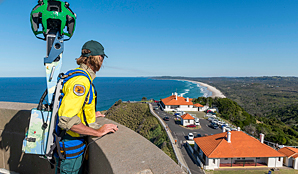
Conservation program:
Bush Trackers
Bush Trackers was created to encourage children to engage with the environment in and around the Greater Blue Mountains World Heritage area. This program highlights the natural and cultural splendour of the greater Blue Mountains through education initiatives and bushwalks.
General enquiries
- National Parks Contact Centre
- 7am to 7pm daily
- 1300 072 757 (13000 PARKS) for the cost of a local call within Australia excluding mobiles
- parks.info@environment.nsw.gov.au
Operated by
- Blue Mountains Heritage Centre and Blackheath office
- 9am to 4.30pm daily. Closed Christmas Day.
- 02 4787 8877
- bluemountains.heritagecentre@environment.nsw.gov.au
- 270 Govetts Leap Road, Blackheath NSW 2785
Park info
- in the Blackheath area of Blue Mountains National Park in the Sydney and surrounds region
Blackheath area is always open but may have to close at times due to poor weather or fire danger.
What's nearby:
Things to do (148)
- 4WD touring (3)
- Aboriginal culture (9)
- Adventure sports (18)
- Birdwatching and wildlife encounters (15)
- Cafes and kiosks (2)
- Cultural heritage (1)
- Cycling (12)
- Environmental appreciation/study (5)
- Historic heritage (14)
- Other experiences (9)
- Photography (3)
- Picnics and barbecues (15)
- Road trips and car/bus tours (3)
- Sightseeing (75)
- Swimming (5)
- Visitor centres (2)
- Walking (83)
- Waterfalls (44)
- Wildflowers (seasonal) (9)
